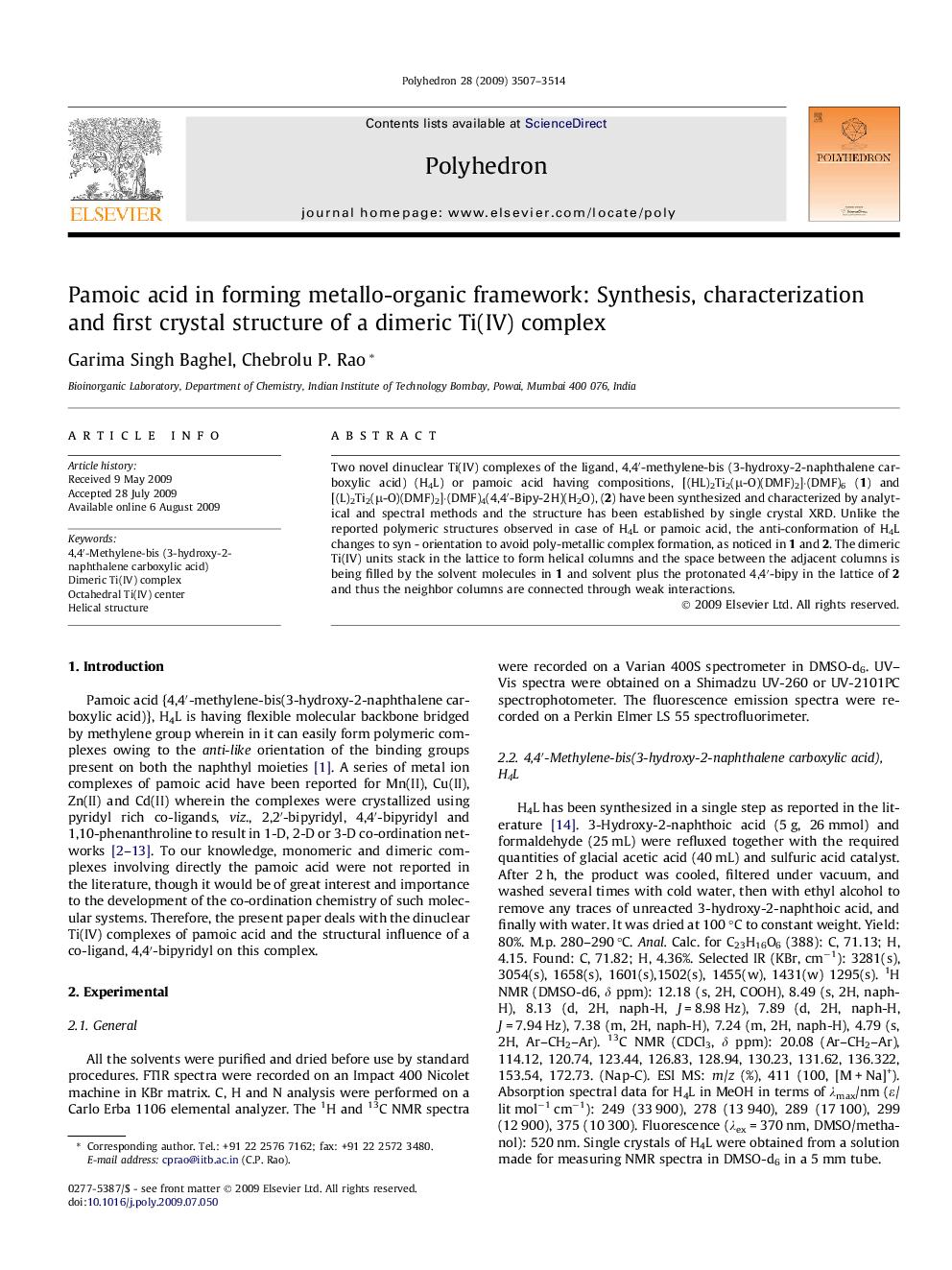| Article ID | Journal | Published Year | Pages | File Type |
|---|---|---|---|---|
| 1337252 | Polyhedron | 2009 | 8 Pages |
Two novel dinuclear Ti(IV) complexes of the ligand, 4,4′-methylene-bis (3-hydroxy-2-naphthalene carboxylic acid) (H4L) or pamoic acid having compositions, [(HL)2Ti2(μ-O)(DMF)2]·(DMF)6 (1) and [(L)2Ti2(μ-O)(DMF)2]·(DMF)4(4,4′-Bipy-2H)(H2O), (2) have been synthesized and characterized by analytical and spectral methods and the structure has been established by single crystal XRD. Unlike the reported polymeric structures observed in case of H4L or pamoic acid, the anti-conformation of H4L changes to syn - orientation to avoid poly-metallic complex formation, as noticed in 1 and 2. The dimeric Ti(IV) units stack in the lattice to form helical columns and the space between the adjacent columns is being filled by the solvent molecules in 1 and solvent plus the protonated 4,4′-bipy in the lattice of 2 and thus the neighbor columns are connected through weak interactions.
Graphical abstractThe ligand, 4,4′-methylene-bis (3-hydroxy-2-naphthalene carboxylic acid) (H4L) and its dimeric Ti(IV) complexes, having compositions, [(HL)2Ti2(μ-O)(DMF)2]·(DMF)6 (1) and [(L)2Ti2(μ-O)(DMF)2]·(DMF)4(4,4′ Bipy-2H)(H2O), (2) have been synthesized and characterized by analytical and spectral methods and the structure has been established by single crystal XRD. Both the complexes exhibit dinuclear Ti(IV) centers, though the co-ordination characteristics vary from 1 to 2. Both the structures exhibited helical chains in their lattices.Figure optionsDownload full-size imageDownload as PowerPoint slide
